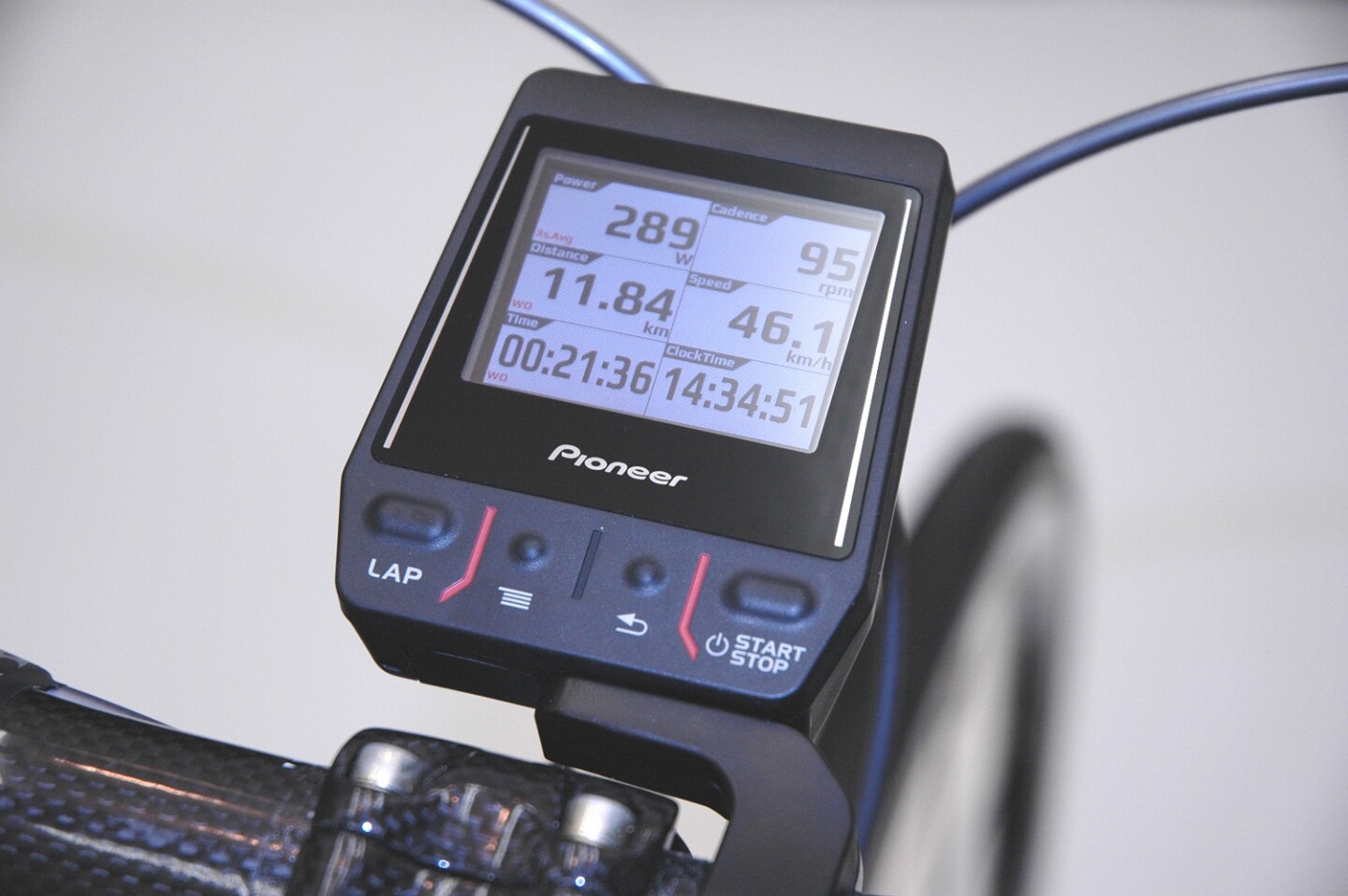Pioneer Electronics has taken its first step into the world of performance cycling with the launch of its new Cyclocomputer and Pedaling Monitor at this year's Interbike show in Las Vegas. In addition to displaying speed, distance, time, power and cadence, the computer can also show exactly where power is lacking within the monitored pedaling rotation. The crank-based monitor system is designed to work with Shimano DURA-ACE crank sets and is made up of sensors and ANT+ wireless transmitters that feed data back to a paired computer.
Pioneer Electronics is best known for its audio, video, in-car and DJ products but is now breaking into the sports and health industry with its SGX-CA900 Cyclocomputer and SGY-PM900 Pedaling Monitor.

Dealing with the IPX6-rated water resistant Monitor system first, the SGY-PM900 consists of a single unit with combined strain gauge sensor and ANT+ wireless transmitter that's attached to the left crank arm, and a sensor-only unit on the right crank arm and a separate transmitter on the chain-ring/spider. Cadence measurements are recorded using a magnet ring attached to the bottom bracket and the left side sensor. Each sensor unit is powered by a CR2032 battery (for up to 200 hours of use) and offers a claimed accuracy of ± 2 percent.
The system can measure a rider's left and right pedaling forces and feedback detailed power, cadence and efficiency stats. It can even look out for so-called dead spots, allowing riders to evaluate and adjust technique accordingly.
"For each side, we are measuring 'force vectors' which we convert into easy to read graphics showing where the force is being applied within the 360 degree rotation - showing the rider in real time how efficient their pedaling is," Pioneer told us. "The Force Vectors are showing torque as well as the angle of the force. If the line is straight up and down, you have the most efficiency. If the line is angled, the rider knows that some energy (efficiency) is being lost by force applied to the left or right. Red lines show power being applied. Blue lines show where power is lost (weight of foot or leg), white lines are neutral, no power gained or lost. The display can be changed to simply show raw Torque."
This performance information is displayed in numeric or graphic form via the 3.3 x 2.67 x 0.86-inch (83.82 x 67.81 x 21.84 mm) Android-based cycling computer. Its 2.2-inch, 320 X 240 pixel resolution QVGA color LCD touchscreen display can also show lap/total averages, GPS position, barometric pressure, ambient temperature, and speed. The included Li-ion battery is said to offer 12 hours of continued use between charges, and the unit will come shipped with a mounting cradle and mini-USB cable for charging and data transfer.

"The system is designed to be an after-market addition for Shimano DURA-ACE 7900, 7950, and 9000 crank-set owners," said Pioneer. "We feel this is the largest group. As we evolve, we will add more crank-set compatibility."
Unfortunately, the company also told us that installation should only be undertaken by a certified fitter. This professional would first need to swap the bike's existing bottom bracket to one made by Pioneer (required for magnetically measured cadence and which is also a function of the torque measurements). After installing the pedaling monitor sensors/transmitters, the system would then need to be calibrated (Pioneer says that the initial installation requires a 10 kg weight to zero out the variables between crank sets).
Finally, the sensors will need pairing to the Cyclocomputer. As the sensors broadcast standard ANT+ data, riders can use other compatible bike computers but Pioneer says that using the SGX-CA900 will ensure "they receive the maximum benefit from our customized graphics and data capture."
Pricing has yet to be pinned down but Pioneer reckons that the Athlete Cyclocomputer and Pedaling Monitor will be "somewhere between US$2,000 - $2,500" when they hit the market during Q2 2013. An online service for performance analysis, session logging and history tracking is also being created to accompany the product release.
Source: Pioneer












